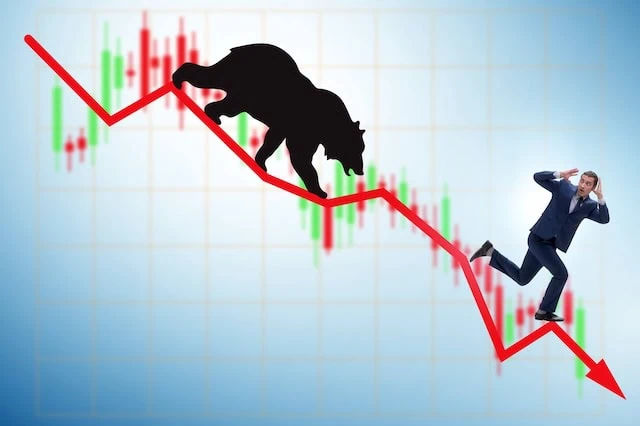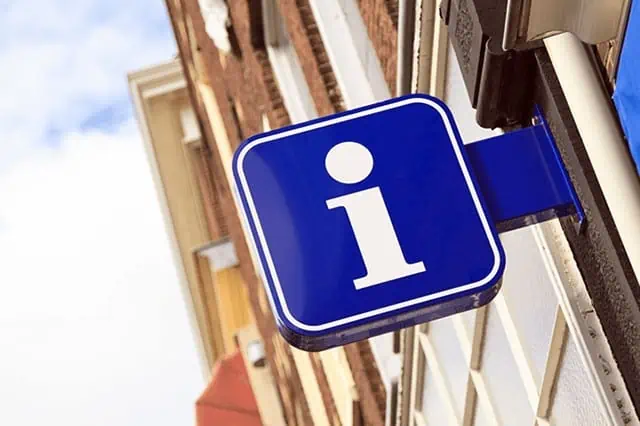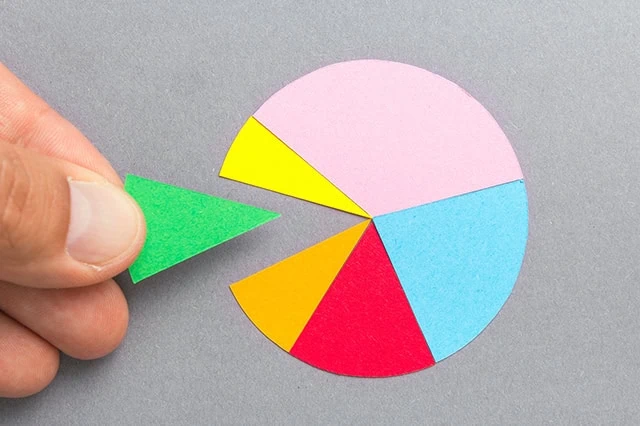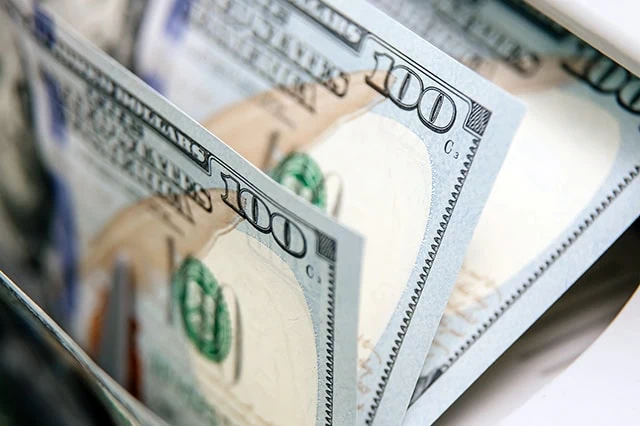“Buy the dip!” “Don’t panic-sell!” “Stop looking at your account!”
It’s safe to assume you’ve read these and other pieces of bear-market advice several times over the past few days, likely in between checks to see how far your 401(k) or brokerage account has fallen. Because while we’re not technically in a bear market as I write this, we’re mighty close.
It’s safe to assume that because I’ve written these exact pieces of advice for years at multiple media outlets, and I’ve watched the likes of CNBC and MarketWatch do the same for even longer. There’s simply not a lot of new wisdom as it pertains to dealing with your stocks circling the drain.
But I can also tell you that we generally do a poor job of explaining the nuances behind these and other tips—that this advice doesn’t work for some people, and that it’s simply not even applicable for others. Today, I’m going to rectify that.
Here are seven common bear-market tips, with much closer scrutiny as to how helpful it really is, including what each piece of advice tends to overlook, and where exceptions might come into play.
What Is a Bear Market?

Before we get to the tips, here are three related terms every investor should know:
- Correction: This is a technical term that refers to a drop of 10% or more from a high.
- Bear market: This is a technical term that refers to a drop of 20% or more from a high.
- Crash: This is a general term that refers to a rapid and steep drop in prices. There is no specific threshold.
So, let’s talk about the potential for a bear market in 2025. Because as I write this (midday April 7), we are not currently in a bear market.
The S&P 500’s last high was 6,144.15, made on Feb. 19, 2025—coincidentally, the five-year anniversary of the start of the COVID bear market.
For the U.S. to fall back into a bear market, the S&P 500 needs to close at least 20% down from that level. That would put the bear-market at 4,915.32. So if the S&P 500 closes at or below 4,915.32, we’ll officially be in a bear market, with an official start date of Feb. 19, 2025.
Everyone generally agrees on that part of the bear market definition. They also agree that the end of a bear market (and the start of a bull market) is when prices hit their lowest point.
Where they tend to disagree is when the end of a bear market is confirmed. Some would say it’s confirmed once the investment has risen 20% off the bear-market low. However, we follow the view that a bear market ends once the investment rebounds all the way past its previous peak.
So, if we do fall into a bear market, and the low point occurs on, say, June 1, 2025, we wouldn’t be able to confirm that end date for the bear market until the S&P 500 closed above 6,144.15. At that point, the bear market will have officially ended on June 1, and the bull market will have officially started on June 1.
7 Bear Market Tips: Let’s Get Real

I’ll say it several more times, but for full disclosure: I’ve proffered most of the following advice multiple times throughout my career. That’s because these tips can be useful.
But over a decade of reviewing reader comments and having long discussions with friends and colleagues, I’ve become increasingly aware that good advice is often repeated in situations where it doesn’t actually apply.
And that’s largely our fault. We in the financial media present generalized advice because we’re talking to an audience of many thousands of people, and we can’t personalize that advice for every last person. But in doing so, we sometimes exclude too much detail, and too much context, and make sweeping recommendations that just don’t speak to large swaths of people.
My hope here, then, is to try to make these little pearls of wisdom speak to a few more people today than they did yesterday.
Do you want to get serious about saving and planning for retirement? Sign up for Retire With Riley, Young and the Invested’s free retirement planning newsletter.
1. Buy the Dip

- The advice: “Stocks are down big. They’re rarely this cheap. You should ‘buy the dip’ while you still can.”
- Is it helpful advice? Yes, if you have the resources. And that’s a big if.
I have joined the rest of the financial media in saying “buy the dip” just about any time the market is down by a significant amount. And every time I’ve sent it, I’ve meant it—it’s earnest advice.
But it raises a fair retaliatory question: “Buy the dip … with what?”
The general wisdom is to always have a little cash set aside in your portfolio to buy a big dip. But many Americans don’t have that much cash to work with in the first place, so they tend to fully invest whatever they can contribute, as soon as they contribute it. That’s part of what made the 2020 and 2022 bear markets exceptional: Individual investors have had a lot more gunpowder with which they could participate.
During COVID, millions of Americans received stimulus checks that they didn’t necessarily need at the moment, and many of those Americans plowed that money into the stock market. We know that because 2020 and 2021 both saw record-breaking levels of brokerage signups.
So in 2020, individual investors were buying the dip with “found” money, leading to a lightning-fast recovery of five months. By 2022, stimulus checks had stopped going out, but Americans’ savings were still a lot healthier than they are today—and even then, the recovery took longer than a year that time around.
Today? A couple years of high inflation have forced Americans to dig into their savings, leaving little (if any) cash on the bench to put to work. Which means the only way an investor could “buy the dip” is to take out debt (no!) or sell some of their current holdings to buy other assets.
Yes, you should absolutely review your portfolio to weed out weak holdings and buy what you believe in … but you should do that no matter what the S&P 500 is doing. And during a bear market, that’s not money coming off the sidelines. You’re selling the dip to buy the dip.
So, yes, if you do happen to keep, say, 5% of your portfolio in cash for a rainy day, well, it’s pouring, so have at it! But a lot of people reading this can’t buy the dip. That’s just the truth.
2. Don’t Panic-Sell!

- The advice: “Don’t panic and start selling because all of your positions are losing money!”
- Is it helpful advice? Yes, but it’s often confused with “Don’t sell at all.”
Again, I’ve absolutely said this, and I’ve absolutely meant it. You shouldn’t sell in a bear market because you’re scared and don’t know what to do.
But that doesn’t mean you shouldn’t ever sell during a bear market. In fact, there are two very good reasons to do so:
- As mentioned above, you’ve reviewed your positions and decided that, in this changing financial landscape, your money could be better invested buying “dips” in other stocks, bonds, what have you.
- You need to pay for your kid’s college education from a 529, or you need to withdraw retirement income from a 401(k), individual retirement account (IRA), or other plan.
Indeed, the second part is what makes bear markets so difficult for some investors even if stocks eventually snap back.
If you don’t need to sell, you probably shouldn’t. A gaggle of studies show that individual investors who try to market-time bear and bull markets largely fail—that they would be better off just buying and holding.
But if you have to pay for your child’s tuition, you have extremely little flexibility. You can’t tell your kid to wait until the next bull market before they go to college. Thus, chances are you have to draw down that 529. And if you’ve already watched 20% of the value erode, you might ask yourself whether you can afford to lose any more value. That’s a legitimate question, and one that would be poorly answered by any general advice I could throw out here. That’s a specific question meant for a financial advisor.
Same goes for retirement. If you’re living largely off your 401(k), you still have to withdraw money to live. And as our look at withdrawal strategies shows, bear markets (especially early on in retirement) can have dramatic consequences depending on timing and your particular withdrawal plan. Whether you should adjust your plan based on a bear market is again a question for your financial advisor.
And if you’re taking required minimum distributions (RMDs), you don’t even have a choice. You must withdraw a specified minimum amount.
Related: What Wall Street Says About Trump’s ‘Reciprocal’ Tariffs
3. Rebalance Your Portfolio

- The advice: “Rebalance your portfolio.” (It’s really straightforward.)
- Is it helpful advice? Yes!
During a bull market, your stock performance will almost certainly outpace your bonds, which means if you’re trying to keep to, say, a 65%/35% stock/bond mix, at some point you’ll have to sell some stocks and buy some bonds to rebalance.
During a bear market, your stock performance will almost certainly lag your bonds, which means if you’re trying to keep that same 65%/35% mix, you’ll have to sell some bonds and buy more stocks.
You could argue that, depending on when in a bear market you do your rebalancing, you might be selling bonds that will continue to go up while buying stocks that might continue to go down.
But none of us actually know what’s going to happen next. And again, market timing typically doesn’t work out for us normies. So unless your financial advisor says otherwise, it’s best to just stick with the plan.
Related: 8 Best Wealth + Net Worth Tracker Apps [View All Your Assets]
4. Diversify Your Portfolio

- The advice: “You should diversify your portfolio.”
- Is it helpful advice? Yes, but it’s not particularly helpful in the middle of a bear market.
First up: This is one of the vaguest pieces of advice that we in the financial media dole out. It’s true, but it’s also a lot more complicated than we make it seem. Should you diversify your portfolio? Sure. How should you diversify your portfolio? Well, that depends on a lot of things. When are you going to retire? How much do you need to retire? Do you grind your teeth anytime you see a loss of more than 1% in the market? Again, how exactly you—you there, reading this!—should diversify is a financial advisor question.
But more to the point of this story: Should you diversify your portfolio during a bear market?
I guess “better late than never,” but portfolio diversification is really meant to limit bear-market losses before they happen, not while they’re happening.
If the market is down 20% but all of your money was plowed into one stock that’s down 50%, sure, it’s still smart to diversify what capital you have left, but a lot of damage has already been done.
And on the off chance that all your money was plowed into a stock that’s up 50% in a bear market? Sure, you should probably count your lucky stars and diversify. But if you’re up 50% in a bear market, it’s going to be a lot more difficult for me to convince you to stop doing something (maximum single-stock risk) that worked so well for you.
Related: 15 Best Investing Research & Stock Analysis Websites
5. Buy Protection

- The advice: “Buy protective assets like defensive sectors, bonds, and gold.”
- Is it helpful advice? Generally yes, but don’t buy defense blindly.
While all of us could probably do a lot of good just leaving our accounts alone during a bear market, not everyone does.
Some people want to be buy-and-hold-forever investors but just can’t help but tinker. If you’re just doing it at the periphery to feel a sense of control, that’s OK! And if you simply aren’t a buy-and-hold-forever investor, but you like to buy and sell and trade and rinse and repeat, that’s OK too, as long as you can financially handle the risk!
If that’s the case, a variety of defensive assets have proven to historically outperform the market. In fact, I’ve written about several of them in my look at bear-market ETFs, and they’ve so far worked wonders in this 2025 downturn.
But you can’t just buy indiscriminately. Every bear market is different—and the nature of the bear market can result in, say, utilities or staples actually underperforming, or typically cyclical sectors like financials and industrials outperforming. One of the best examples is energy, which has been gutted across numerous downturns throughout history but actually took off like a rocket in 2022 thanks to the particular circumstances of that specific bear market.
Related: 5 Best Money Market Funds [Protect Your Savings]
6. Continue Dollar-Cost Averaging

- The advice: “Keep contributing at the same rate, at the same intervals, no matter how good or bad the stock market is doing.” (In other words, keep dollar-cost averaging.)
- Is it helpful advice? Generally yes, but your financial circumstances might dictate otherwise.
Dollar-cost averaging (DCA) is a generally sound investment strategy. In short, if you regularly put the same amount of dollars to work buying investments, you’ll end up buying more when they’re low, and buying less when they’re high. It’s a set-it-and-forget-it plan that not only ensures your money gets invested, but actually works in your favor from a valuation standpoint. Two enthusiastic thumbs up!
However, bear markets rarely exist in a bubble. They usually occur amid some sort of economic tumult, such as a recession or depression … and among other things, that can mean job losses. If you think you’re at risk of being laid off (and especially if you’re not confident in the size of your emergency fund), one of the ways to financially prepare is to stop contributing to your brokerage and retirement accounts and stuff the cash away instead.
So, in the event that you’re worried about your near-term situation, you might actually consider downshifting or stopping your dollar-cost averaging, if only temporarily.
Related: 11 Best Vanguard Funds for the Everyday Investor
7. Stop Looking at Your Account Balance Every Day

- The advice: “Don’t open your brokerage account or 401(k) every day during a bear market.”
- Is it helpful advice? Yes, if you’re a buy-and-holder. No, if you’re a trader.
I don’t just endorse this advice. I think you should take it even further: Don’t open your brokerage account or 401(k) every day period, no matter what the market is doing.
Exceptions apply! If you’re a day trader, I promise you’ll do terribly if you start ignoring all your positions for a few days!
But the average buy-and-hold investor simply doesn’t need to look at their account balance every day. It causes you to overanalyze both your overall direction and your individual holdings. And while you should be discerning about how your money is invested, you shouldn’t tempt yourself into constantly tinkering with it.
Want to talk more about your financial goals or concerns? Our services include comprehensive financial planning, investment management, estate planning, taxes, and more! Schedule a call with Riley to discuss what you need, and what we can do for you.







![The 11 Best Vanguard ETFs for 2025 [Build a Low-Cost Portfolio] 23 best Vanguard ETFs](https://youngandtheinvested.com/wp-content/uploads/best-vanguard-etfs-600x403.webp)
![5 Best Money Market Funds [Protect Your Savings, 2025] 24 a businessman protects his savings in the safe.](https://youngandtheinvested.com/wp-content/uploads/money-market-funds-safe-safety-security-1200-600x403.webp)
